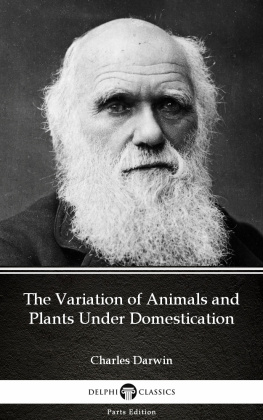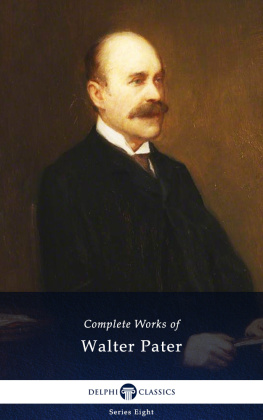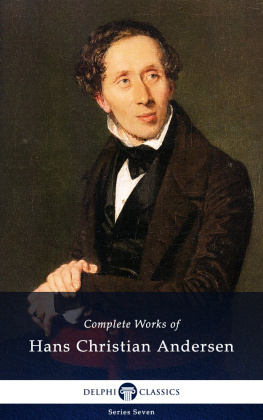INTRODUCTION TO THE ZOOLOGY OF THE VOYAGE OF H.M.S. BEAGLE

The Zoology of the Voyage of H.M.S. Beagle - or to give this book its full title - The Zoology of the Voyage of H.M.S. Beagle Under the Command of Captain Fitzroy, R.N., during the Years 1832 to 1836 - was not written by Darwin, but was edited by him. However, it is not (as you might expect from Darwin) an ordinary edited volume. The norm is to select a portmanteau title, and then invite experts in the area to contribute chapters reflecting their specialist knowledge. The editors art is in selecting the appropriate contributors to cover the field, and then making minor changes in the texts to correct any errors, and to provide for an evenness of approach and style. The books (published by Freeman in London between 1838 and 1846) were very different - Darwin indeed describes himself as Editor and Superintendent.
During the voyage of the Beagle, Darwin collected a vast amount of material, plants, animals and geological specimens (including fossils), which were labelled and catalogued, and sent to John Stevens Henslow, Professor of Botany at Cambridge University. When he returned, Darwin shared this material out amongst selected specialists, to garner expert opinions and descriptions. The results of this exercise were published in five parts, each authored by the appropriate expert:
Part 1. Fossil Mammalia (18381840), by Richard Owen (Preface and Geological introduction by Darwin; Fig. 1)
Part 2. Mammalia (18381839), by George R. Waterhouse (Geographical introduction and a notice of their habits and ranges by Darwin)
Part 3. Birds (18381841), by John Gould
Part 4. Fish (18401842), by Leonard Jenyns
Part 5. Reptiles (18421843), by Thomas Bell (Fig. 2)
In Darwins words The object of the present Work is to give descriptions and figures of undescribed and imperfectly known animals, both fossil and recent, together with some account, in the one case, of their geological position, and in the other of their habits and ranges. As I do not possess the knowledge requisite for such an undertaking, and as I am, moreover, particularly engaged in preparing an account of the geological observations made during the voyage, several gentlemen have most kindly undertaken different portions of the Work. Besides the very great advantage insured in thus enlisting the attainments of these naturalists in the several departments of science, to which they have paid most attention, a great delay is avoided by adopting this method of publication, which must otherwise have been incurred before the materials could have been made known.

Figure 1: The title page of Part 1 of The Zoology of the Voyage of H.M.S. Beagle, 1838

Figure 2: An original plate of a reptile from Part 5 of The Zoology of the Voyage of H.M.S. Beagle
CONTENTS
PART I.
THE
ZOOLOGY
OF
THE VOYAGE OF H.M.S. BEAGLE,
UNDER THE COMMAND OF CAPTAIN FITZROY,
DURING THE YEARS
1832 TO 1836.
PUBLISHED WITH THE APPROVAL OF THE LORDS COMMISSIONERS OF HER MAJESTYS TREASURY.
Edited and Superintended by
CHARLES DARWIN, ESQ. M.A. F.G.S.
CORRESPONDING MEMBER OF THE ZOOLOGICAL SOCIETY, AND NATURALIST TO THE EXPEDITION.
FOSSIL MAMMALIA,
BY RICHARD OWEN, ESQ.
PROFESSOR OF ANATOMY AND PHYSIOLOGY IN THE ROYAL COLLEGE OF SURGEONS, LONDON.
LONDON:
SMITH, ELDER AND CO., 65, CORNHILL.
MDCCCXXXVIII.
PREFACE.
HIS MAJESTYS ship, Beagle, under the command of Captain FitzRoy, was commissioned in July, 1831, for the purpose of surveying the southern parts of America, and afterwards of circumnavigating the world. In consequence of Captain FitzRoy having expressed a desire that some scientific person should be on board, and having offered to give up part of his own accommodations, I volunteered my services; and through the kindness of the hydrographer, Captain Beaufort, my appointment received the sanction of the Admiralty. I must here, as on all other occasions, take the opportunity of publicly acknowledging with gratitude, the obligation under which I lie to Captain FitzRoy, and to all the Officers on board the Beagle, for their constant assistance in my scientific pursuits, and for their uniform kindness to me throughout the voyage. On my return (October, 1836) to England, I found myself in possession of a large collection of specimens in various branches of natural history; but from the great expense necessary to secure their publication, I was without the means of rendering them generally serviceable.
The Presidents of the Linnean, Zoological, and Geological Societies, having given me their opinion respecting the utility to be derived from publishing these materials, I addressed a letter to the Right Honourable the Chancellor of the Exchequer (T. Spring Rice, Esq.) informing him of the circumstances under which I hoped that I might venture to solicit the aid of Government. In reply, I received a communication (as below) announcing to me that the Lords of the Treasury, from their readiness to promote Science, were willing, under certain conditions, to give me the most liberal assistance.



























